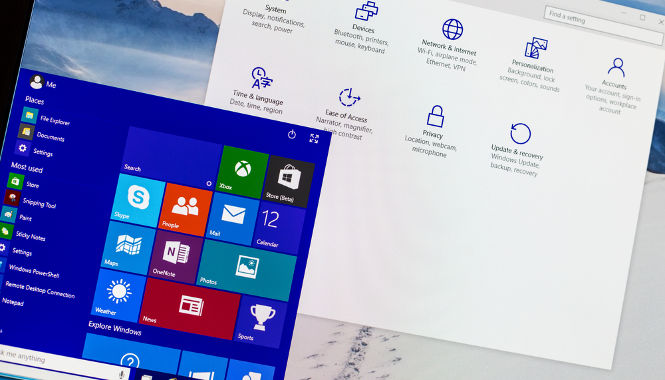
Microsoft has revealed its plans for a sprawling array of seven Windows 10 editions, spanning from the Internet of Things (IoT) to the enterprise and even your home.
Writing on the firm’s blog, Tony Prophet, CVP of Windows and search marketing for Microsoft, said: "Windows 10 will power an incredibly broad range of devices – everything from PCs, tablets, phones, Xbox One, Microsoft HoloLens and Surface Hub.
"It will also power the world around us, core to devices making up the Internet of Things, everything from elevators to ATMs to heart rate monitors to wearables."
Here’s what you need to know to choose the right version:
1. Home
The main consumer version of Windows 10 will be looking to build on Microsoft’s initial advantage in the home desktop market, and will cover standard PCs, tablets and hybrid devices.
Innovations this time include the company’s personal assistant Cortana (based on the character from video game series Halo), the Microsoft Edge web browser and Windows Hello, a tool which allows you to login through face, iris or fingerprint recognition.
Gamers will also be happy to learn that Xbox is being integrated into Windows 10, allowing them to play Xbox One games through their PC, and share screenshots and footage online.
2. Mobile
Converting Windows to small tablets and smartphones, Microsoft will be providing a separate edition of the operating system to cater to the smaller screen.
Central to the appeal of the mobile software is Continuum, a tool which allows you to run Windows 10 on any PC using your mobile. Such functionality was demonstrated by Microsoft at this month’s Ignite conference in Chicago, and it looks very impressive.
Customers will also be able to access all the normal Windows apps, as well as a version of Office customised for touchscreens.
3. Pro
For serious computer users who do not want to be limited by the Home edition Microsoft is also offering Pro, which includes all the same features plus some extras, and is particularly useful for small businesses.
Security having risen up the agenda, many of the bonus parts involve management of devices, apps and data, as well as protecting access to the cloud. Microsoft are pitching this towards companies with choose your own device policies, which offer staff a select range of devices to use during their jobs.
The other significant benefit of Pro is that it comes with access to Windows Update for Business, which streamlines patching and offers security support to customers.
4. Enterprise
Even more high-end than Pro is Enterprise, a version of Windows 10 aimed at medium and large businesses and organisations.
This edition further bolsters the security features that Pro boasts, as well as incorporating more controls for operating system, device and app management. Most significantly it lets Microsoft customers sit on the bleeding edge of the company’s technology, with the product being offered to Volume Licensing customers.
Such arrangements are part of a broader plan by Microsoft to continually update Windows from now on rather than releasing a major update every couple of years. Time will tell how popular this proves.
5. Education
Targeted towards school staff and students, Education builds on the Enterprise edition but with the advantage of cheaper licensing deals and some customisation for the needs of the industry.
6. Mobile Enterprise
Mobile Enterprise is a companion piece to the main Enterprise edition, adding security features and mobile device management to the standard consumer Mobile version of Windows 10.
7. IoT Core
Windows has a long history of use as the operating system of cash points and other industrial products, but so far little is known about how Windows 10 will change this side of Microsoft’s business.
With IoT Core the company has only said it is looking to cater for "low footprint, low cost devices like gateways". Stay tuned for more on this front.






